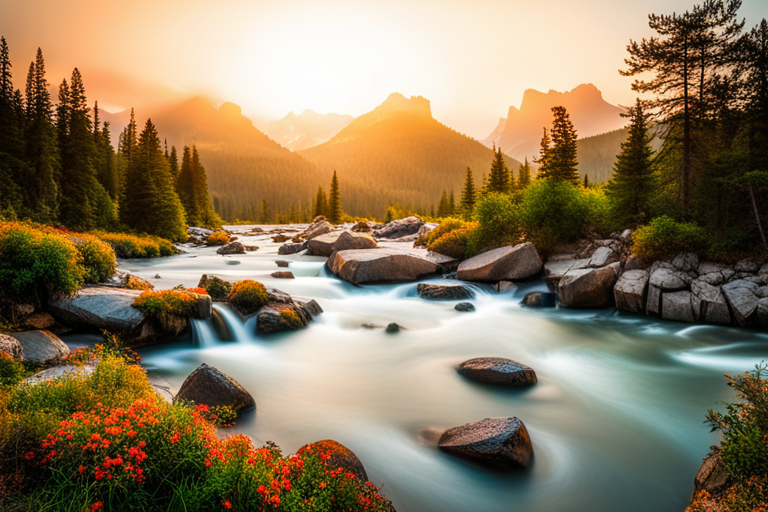Wild Photo Adventures: A Comprehensive Guide for 2024

5 Ways to Capture Stunning Wildlife Photos in 2024 - Check it Out
Are you a wildlife photography enthusiast looking to take your skills to the next level in 2024? Look no further! In this comprehensive guide, we’ll delve into the world of wild photo adventures and provide you with invaluable tips, gear recommendations, and techniques to help you capture breathtaking wildlife photos. From choosing the right camera and lens to mastering composition and lighting, we’ve got you covered. Get ready to embark on an incredible journey into the wild with your camera as your trusty companion!
Table of Contents:
- The Art of Wildlife Photography: Unleashing Your Creativity
- Choosing the Right Gear: Cameras, Lenses, and Accessories
- Camera Settings and Techniques for Stunning Wildlife Photos
- Mastering Composition and Lighting in Wildlife Photography
- Tips for Ethical and Responsible Wildlife Photography
- Recommended Gear for Wildlife Photography in 2024
- Conclusion: Elevate Your Wildlife Photography to New Heights
The Art of Wildlife Photography: Unleashing Your Creativity
Wildlife photography is a captivating art form that requires patience, skill, and a deep understanding of animal behavior. It offers a unique opportunity to capture the beauty and diversity of the natural world while introducing a personal touch to your photographic journey. As you embark on this exciting adventure, remember that the goal is not just to take photos; it’s about creating images that tell a story, convey emotion, and transport the viewer directly into the heart of the wilderness.
Choosing the Right Gear: Cameras, Lenses, and Accessories
The right gear can make all the difference in wildlife photography. Here are some key considerations when selecting your camera and lens:
Camera:
- Choose a camera with a fast autofocus system and a high burst rate to capture fast-moving subjects.
- Consider a full-frame camera for better image quality and low-light performance.
- Look for a camera with weather sealing to protect it from harsh conditions.
Lenses:
- Zoom lenses (e.g., 100-400mm or 200-600mm) offer versatility and allow you to capture subjects at varying distances.
- Prime lenses (e.g., 300mm or 500mm) provide exceptional image quality and are great for capturing close-ups.
- Consider a teleconverter to extend the reach of your lens.
Accessories:
- Tripods and monopods provide stability for sharp images, especially in low-light conditions.
- Remote shutters allow you to trigger the camera without causing vibrations.
- Lens hoods protect your lens from stray light and improve image quality.
Camera Settings and Techniques for Stunning Wildlife Photos
Mastering your camera settings and techniques is crucial for capturing stunning wildlife photos:
- Aperture: Use a small aperture (e.g., f/8 or f/11) for sharp images with a greater depth of field.
- Shutter Speed: Use a fast shutter speed (e.g., 1/1000s or faster) to freeze motion and capture sharp images of moving subjects.
- ISO: Adjust ISO as needed to achieve the desired brightness without introducing excessive noise.
- Focus: Use autofocus with single-point or continuous focus depending on the subject’s movement.
- Burst Mode: Use burst mode to capture a series of images in quick succession, increasing your chances of getting the perfect shot.
Mastering Composition and Lighting in Wildlife Photography
Composition and lighting play a vital role in creating visually appealing wildlife photos:
- Rule of Thirds: Use the rule of thirds to create balanced and visually appealing compositions.
- Leading Lines: Incorporate leading lines to guide the viewer’s eye towards the main subject.
- Background: Choose backgrounds that complement the subject and avoid distracting elements.
- Lighting: Shoot during the golden hours (early morning and late afternoon) for warm, diffused light.
- Backlighting: Use backlighting to create dramatic silhouettes.
Tips for Ethical and Responsible Wildlife Photography
As wildlife photographers, we have a responsibility to minimize our impact on the environment and respect the animals we photograph:
- Avoid disturbing wildlife. Observe animals from a distance and use zoom lenses to avoid getting too close.
- Do not use flash photography, as it can scare or harm animals.
- Be aware of your surroundings and avoid trampling vegetation or damaging the habitat.
- Support conservation efforts by donating to wildlife organizations and promoting responsible tourism.
Recommended Gear for Wildlife Photography in 2024
To help you get started, here are some recommended gear options for wildlife photography in 2024:
- Camera: Sony A7 IV
- Lenses: Canon EF 100-400mm f/4.5-5.6L IS II USM Lens
- Monopod: Manfrotto MHXPRO-BHQ2 XPRO Monopod with Q2 Ball Head
- Remote Shutter: Vello ShutterBoss II Wireless Remote Shutter Release
- Lens Hood: Canon ET-83C Tulip Lens Hood
Conclusion: Elevate Your Wildlife Photography to New Heights
With the right gear, techniques, and mindset, you can elevate your wildlife photography to new heights in 2024. Remember, it’s not just about taking photos; it’s about creating images that inspire, educate, and connect us with the beauty and diversity of the natural world. So grab your camera, embrace the wild, and let your creativity soar!
Disclaimer: This article is an advertorial for certain product recommendations, and we receive a commission for any purchases made through the included links.